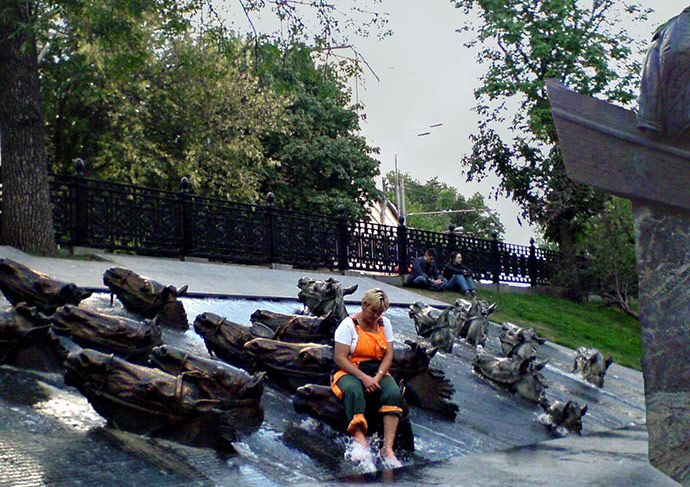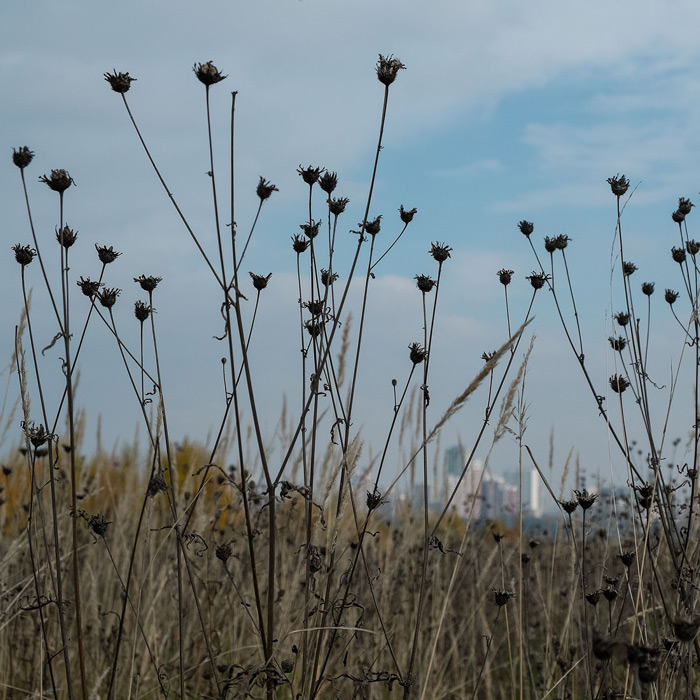Quiet flows the Don
Aug 4, 2009
For another entry in our occasional series on post-Soviet public art, consider this monument, erected in 2007 in Moscow, thonoring the Nobel-prize-winning author Mikhail Sholokhov.
There must be something about the situation of this monument that makes it difficult to photograph the whole thing at once. I've settled here for a picture that shows barely more than half of it--missing off to the right is most of a stone pedestal supporting a rowboat carrying a bronze statue of Sholokhov himself. That's the bow of the boat and the curve of Sholokhov's back at the right edge of the photo. He is just sitting in the boat, not rowing.
The boat and the swimming horses are not directly from any of his novels, I'm told. Note that there are two groups of horses, both apparently trying to swim upstream but veering off in slightly different directions. One group is reddish in color, the other whitish. This has all been described as a metaphor for the Russian Revolution, in which Sholokhov fought as a 13-year-old boy on the side of the reds. His most famous novel, And Quiet Flows the Don, looks at life among the Cossacks of his native Rostov-on-Don region of Russia in the years leading up to World War I and the Russian Civil War and revolution. If the river is representing time or history, it is surely significant that Sholokhov is facing bacward in the boat.
The monument is the work of a committee: artist Alexander Rukavishnikor, architect Igor Voskresensky, and sculptors Iulian and Philip Rukavishnikov.
Sholokhov is something of a Soviet success story. Although the revolution ended his formal schooling at the age of 13 and he suppored himself in the early 1920s as a stevedore, he decided to become a writer and took advantage of writers' seminars offered for workers.. His mother, a Ukrainian, was illiterate until late in life, when she decided to learn to write letters to her son.
Perhaps the greatest feud of Soviet literary history involved Sholokhov and Aleksandr Solzhenitzsyn, who despised one another. Sholokhov wrote a scathing review of Solzhenitzsyn's work, and Solzhenitzsyn accused Sholokhov of plagiarism. Many Moscow residents dislike the monument intensely--Sholokhov had nothing to do with Moscow, they say, and should not be memorialized in the city--certainly not on the street named Gogol Boulevard, The underlying issue seems to be that he's a Soviet author, and these latter days are a problematic time for monuments to Soviet authors.


